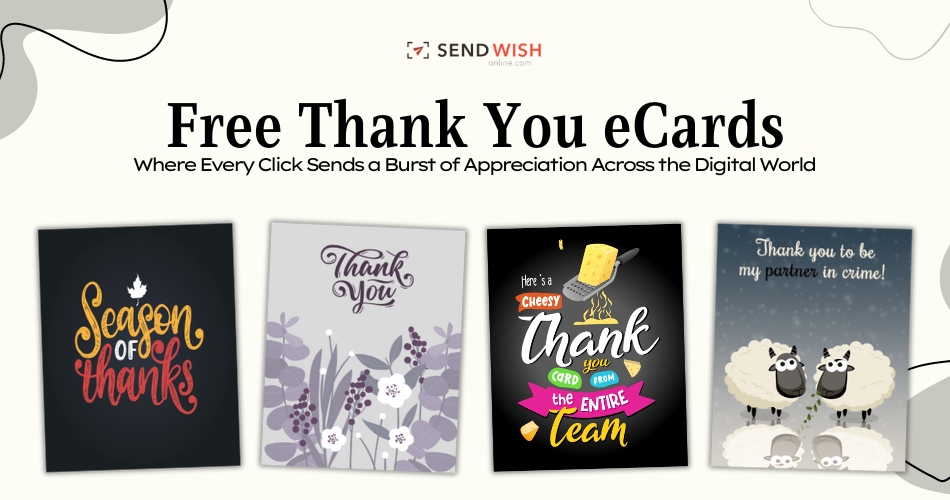
Introduction:
In today’s fast-paced and digital world, the art of expressing gratitude has often taken a backseat. However, a simple act of sending a thank you card carries immense power in making someone feel appreciated and valued. Crafting the perfect thank you card is an art form that allows us to convey our heartfelt thanks in a unique and personal way. In this article, we will explore the significance of thank you cards, discuss the elements of a well-crafted thank you card, and provide tips on how to create the perfect one.
The Significance of Thank You Cards:
In a world inundated with emails, text messages, and social media notifications, receiving a physical thank you card stands out as a meaningful gesture. Thank you cards demonstrate thoughtfulness, sincerity, and the willingness to go the extra mile to express gratitude. They create a lasting impression and strengthen personal connections in both personal and professional relationships. A well-crafted thank you card can leave a lasting impact on the recipient’s emotions and foster goodwill.
Elements of a Well-Crafted Thank You Card:
a) Personalization: Address the recipient by name and mention the specific reason or act for which you are grateful. Personalization adds a touch of sincerity and shows that you have taken the time to reflect on their kindness.
b) Opening: Begin the thank you card with a warm greeting or a heartfelt salutation. Capture the recipient’s attention from the very first line and set the tone for the message.
c) Expressive Language: Use warm, positive, and genuine language to express your gratitude. Be specific about what you are thankful for and how it has impacted you. Highlight the value of the recipient’s actions and the positive emotions it has generated.
d) Length: Keep your thank you card concise and to the point. Aim for a balance between expressing your gratitude and maintaining the recipient’s interest. Avoid overly lengthy messages that may dilute the impact of your appreciation.
e) Handwriting: Writing the thank you card by hand adds a personal touch that conveys authenticity and thoughtfulness. It shows that you have invested time and effort into creating a unique message for the recipient.
f) Closing: End the card with a warm closing statement, such as “With heartfelt thanks” or “Gratefully yours,” followed by your name. This final touch leaves a lasting impression and completes the overall tone of gratitude.
Tips for Creating the Perfect Thank You Card:
a) Promptness: Send your thank you card as soon as possible after receiving the gift, favor, or act of kindness. Timeliness adds to the sincerity and impact of your appreciation.
b) Thoughtful Design: Choose a free thank you cards that reflects your personality or resonates with the recipient’s preferences. Consider using custom designs or handmade cards for an extra touch of uniqueness.
c) Reflect on the Impact: Take a moment to reflect on the positive impact the recipient has made on your life. Consider how their actions have influenced you and express your gratitude accordingly.
d) Be Specific: Avoid generic or vague statements of gratitude. Instead, be specific about what you are thankful for and how it has made a difference. This demonstrates genuine appreciation and shows that you have paid attention to the details.
e) Proofread and Edit: Before sending your thank you ecards, proofread it for any spelling or grammatical errors. A well-written and error-free card enhances the overall impression and showcases your attention to detail.
f) Follow-Up: Consider following up with the recipient after they have received your thank you card. A phone call, a personal message, or even a face-to-face conversation can further deepen the connection and reinforce your appreciation.
The Power of Handwritten Messages:
In today’s digital age, where communication is primarily through typing and screens, a handwritten thank you card holds a special significance. The effort and personal touch of physically writing a message demonstrate a level of care and thoughtfulness that cannot be replicated by electronic means. Handwritten messages evoke a sense of nostalgia and intimacy, making the recipient feel truly valued and appreciated.
Tailoring the Message to the Recipient:
One of the key aspects of crafting the perfect thank you card is tailoring the message to the recipient. Consider their personality, interests, and preferences when selecting the design, tone, and wording of the card. For example, if the recipient is known for their sense of humor, incorporating a lighthearted and witty tone can add a personal touch to the message. Adapting the card to the recipient’s style shows that you have made an effort to create a meaningful and unique expression of gratitude.
Conclusion:
Crafting the perfect thank you card is an art that allows us to express gratitude in a meaningful and personal way. By paying attention to the elements of a well-crafted thank you card and following the tips provided, you can create a card that leaves a lasting impact on the recipient. Remember, a simple act of expressing gratitude can brighten someone’s day, strengthen relationships, and foster a culture of appreciation in our fast-paced world. So, pick up a pen, select a beautiful card, and let your heartfelt thanks flow through the art of a perfectly crafted thank you card.




